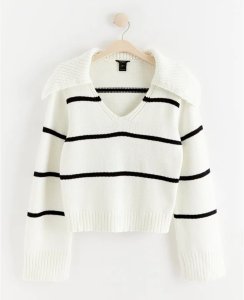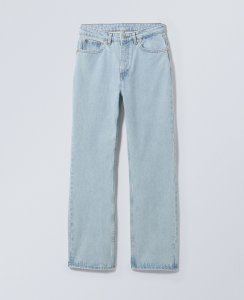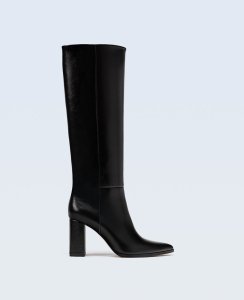A wardrobe clear out always feels like a good way to start the new year – there’s little more therapeutic than reducing clutter and getting organised as you look ahead to a fresh 12 months. But according to a recent survey by environmental group WRAP, a quarter of the clothes in our wardrobes haven’t been worn in a year, accounting for a phenomenal 1.6 billion unworn garments hanging in the UK’s wardrobes. That’s a lot of clothes facing the chop and a lot of potential waste.
Though reselling unwanted clothes is a great way to make a bit of extra cash, donating your old clothes and accessories is by far the most hassle-free option – but it needs to be done responsibly. This is our guide to doing it right.
Before you donate…
The cost-of-living crisis has seen demand for affordable second-hand clothing surge, with charity shops reporting a welcome shift in attitudes towards buying preloved. This is great news if you’ve got items you no longer wear that still have life left in them – but this is the key: any item you donate needs to be in a resalable or wearable condition.
If items are dirty, have holes, missing buttons, broken zippers or stains, they will ultimately end up in landfill. So, before you donate anything you need to do your part – quality check every item you wish to donate. If you feel an item is no longer in a wearable condition, don’t donate it. Instead, look into textile recycling schemes in your local area (never chuck old clothes in the bin if you can avoid it!) or think about whether you could repurpose the item for another use, be it as clothing you keep aside to wear when you decorate or garden, or old T-shirts that become cloths for cleaning.
Target your donation
The WFH revolution means thousands of us venture into the office less, so our need for smart office-appropriate clothing has lessened. If you’re one of these people, you may have an excess of more formal pieces like blazers, shirts, tailored trousers and skirts, smart shoes and bags wallowing unloved in your wardrobe.
Rather than just bundling them up and dropping them off at your nearest charity shop, make your donation more targeted by looking for charities that specifically require workwear.
One such organisation is Smart Works, which helps women referred from Job Centres, mental health charities, women’s refuges, homeless shelters, the prison service, care service and youth organisations by giving them interview-appropriate outfits to enable them to feel equipped, confident and more likely to succeed at interview. Once they’ve secured a new job they receive a capsule wardrobe that will last them until their first pay cheque. Smart Works will always accept donations of quality items, and their website lists which items they are in particular need of at any given time.
But Smart Works isn’t the only one – it’s easy to research organisations in your local area that offer a similar service.
The donate-resale hybrid
A wardrobe clear-out can be gutting. Sometimes it’s hard to admit that an item of clothing you’ve bought no longer serves you, for whatever reason, especially if you still like it. Even the thought of it languishing unnoticed on a charity shop rail can be quite sad. But that’s where donate-resale hybrid Thrift+ comes in.
Request one of their free donation bags, fill it with your good quality cast-offs, send it back and they will photograph and list your items for sale on their platform. You can choose to donate all of the profits made to a charity of your choice, receive Thrift+ store credit, or split the proceeds 50/50 between the two. It aims to make reselling easier than discarding.
There are a few caveats – they won’t accept items from ultra-fast fashion brands like Shein and Primark but the likes of Zara, Whistles, & Other Stories, Mango and COS are, and all items must be in a good condition. It’s a super easy way to ensure that your loved but no longer wanted clothes and accessories get the best possible chance of a second lease of life while raising funds for charity – and all with minimal effort from you. What more could you want?
Read more:
- How to donate unwanted Christmas gifts
- The ultimate wardrobe clear-out: where do you begin?
- 6 insider hacks for looking after your clothes properly so they last forever
- Your New Year wardrobe refresh: the pieces to buy and how to style them
Head to the high street
A plethora of high street stores now offer incentives to donate unwanted clothes and accessories. For example, you can head to M&S and place your items in one of their Shwop boxes. This partnership with Oxfam ensures that all the items are either resold via Oxfam stores, reused in different countries around the world or recycled. If you’re a Sparks member you’ll even get a reward each time you Shwop.
Alternatively, you can take your items to an Oxfam shop and as long as they include one M&S item you’ll receive a £5 voucher to spend on M&S clothing and homewares. Similarly, if you take a bag of unwanted items into any H&M store, you’ll receive a £5 voucher in return. You can do the same at sister brands Monki and & Other Stories.
Shoe store Schuh offer a similar program – drop your unwanted shoes off and you can get a £5 voucher to use against a full-priced new pair priced at £25 or more. Schemes like these are becoming more and more common so it’s always worth keeping an eye out and doing some research to find out if the stores you regularly visit anyway could also become a great place to donate.
Sharing is caring
If you’re up for putting a little more effort into donating then look to sharing platforms like Olio, Freecycle, Freegle and Facebook Marketplace. List your items and find out if there is someone locally who would like them. It’s a more personal approach that will ensure your items go to someone who really wants them.
From the comfort of your home
Pieces you'll truly wear forever:






*Eliza may earn commission on sales from these product links
It has literally never been easier to donate your unwanted clothes and accessories – you don’t even need to leave your house. A few taps on your phone and your preloved goodies could be collected from your doorstep. There are multiple individual charities that offer this service, including Marie Curie, the The British Heart Foundation and TRAID (check their websites for specifics) or alternatively you could turn to a specialist company like collectmyclothes.co.uk, which collects and then distributes donations to multiple charities.
Or perhaps you order regularly from ASOS? If so, you can arrange for your DPD delivery driver to pick up your donations for free when they drop off your next order via their ReLove scheme.
Get swapping
Donating doesn’t just mean giving your clothes to charity. Another way to clear out your unwanted clothes and accessories is to consider swapping. This could either be via a self-organised get together with friends, where you each bring your unwanted items, or via a company like Verte or Stitch To Wear, which run swapping events throughout the year encouraging people to swap instead of shop.
You can also use resale platforms Depop and Vinted for swaps, just check out their swapping policies and be sure to label your items as swaps, not sales.










